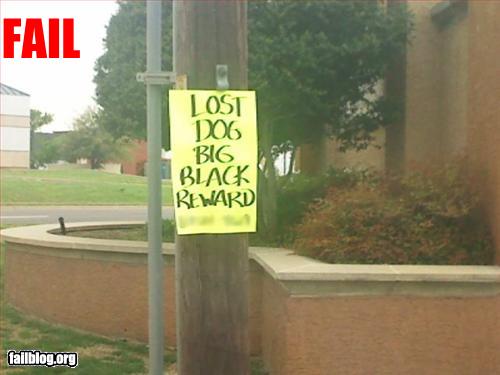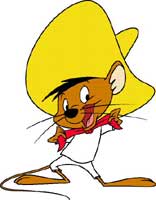The photo below was submitted to Fail Blog as a failure of communication:
In English adjectives come after before the noun that they modify such that, the way this is written, it reads as if there is a “big black reward” for the finder of the “lost dog” instead of a “reward” for the finder of the “big black dog.”
So this is funny, right?
It’s not simply funny because of the grammar mix up, it’s funny because “big” and “black,” when put together, have a particular connotation. We live in a society in which those words often go together because we stereotype black men as having large penises and being, generally, large.
The fact that the grammar mistake is humorous, then, relies specifically on this stereotype… so it’s nice evidence that the stereotype is real. The sign simply would not have the same impact if it read “Lost Dog Big White Reward” or “Lost Dog Big Yellow Reward.”
Fail Blog, via Dr. Grumpy.
Lisa Wade, PhD is an Associate Professor at Tulane University. She is the author of American Hookup, a book about college sexual culture; a textbook about gender; and a forthcoming introductory text: Terrible Magnificent Sociology. You can follow her on Twitter and Instagram.












